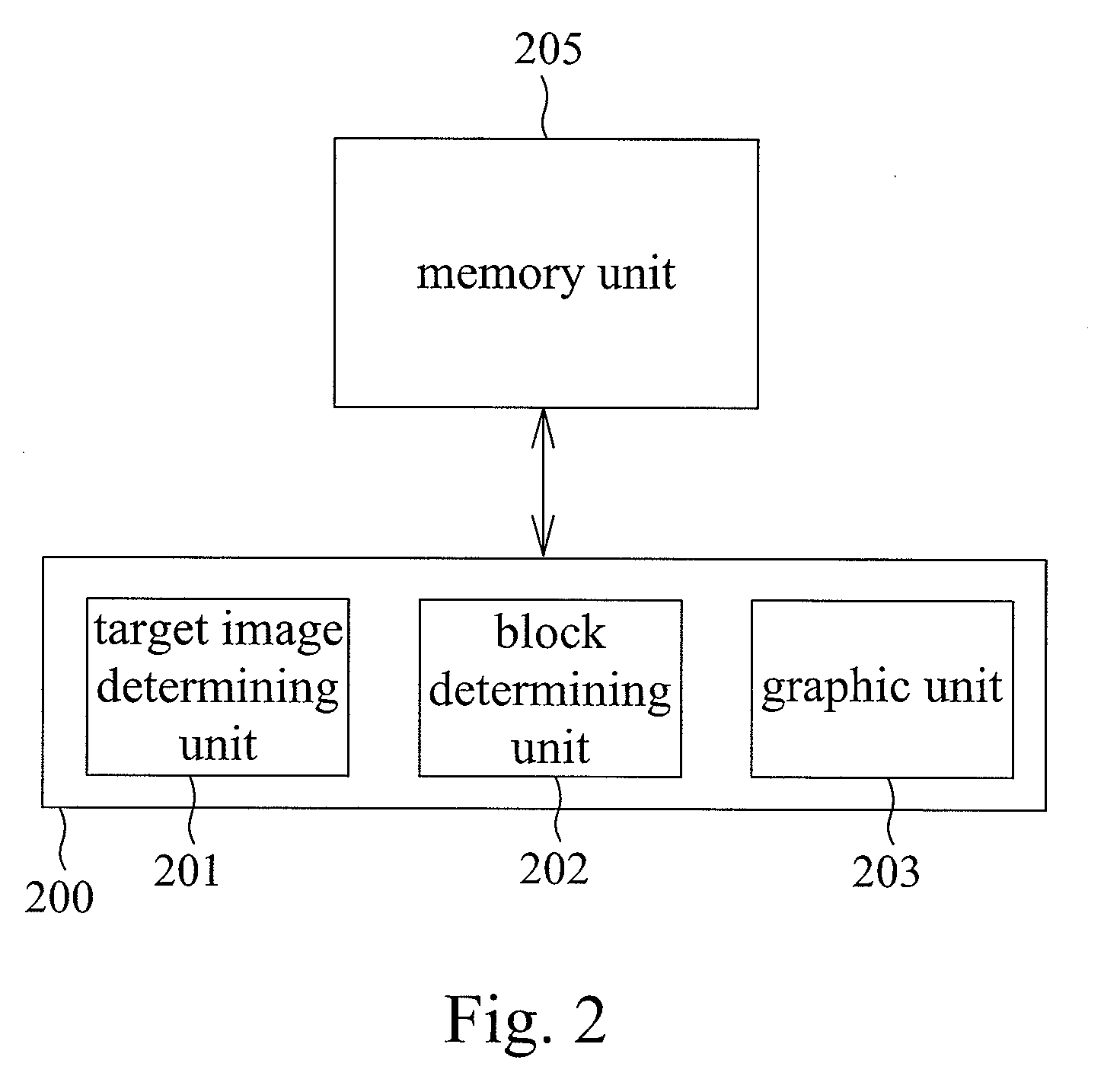Image Processing Method and Associated Apparatus for Rendering Three-dimensional Effect Using Two-dimensional Image
a two-dimensional image and image processing technology, applied in the field of three-dimensional (3d) effect rendering, can solve the problems of inability to fully understand the depth of the image, burdened with more complicated and costly implementation, and inability to achieve depth information, etc., to achieve the effect of enhancing the overall system performance and reducing software and hardware costs
- Summary
- Abstract
- Description
- Claims
- Application Information
AI Technical Summary
Benefits of technology
Problems solved by technology
Method used
Image
Examples
first embodiment
[0023]With reference to FIG. 4, the block determining unit 202 calculates change rates of coordinates at two sides of the trapezoidal image Q2 (i.e., the change rates of the planar coordinates P21 and P23 of the two left vertices, and the change rates of the planar coordinates P22 and P24 of the two right vertices of the quadrilateral image Q2) to respectively obtain a first coordinate change rate and a second coordinate change rate. With the first and second coordinate change rates, coordinates of two terminal points of each scan line of the trapezoidal image can be obtained. Modifications may be made to the foregoing approaches of dividing the quadrilateral image Q2 into the plurality of blocks and determining from the quadrilateral image Q1 the plurality of blocks corresponding to the blocks of the quadrilateral image Q2. For example, in the first embodiment, the quadrilateral image Q2 is divided into a plurality of rectangular blocks in a unit of one scan line, and the block det...
second embodiment
[0025]Further, in the second embodiment, the area of each rectangular block of the quadrilateral image Q2 determined by the block determining unit 202 is covered by a single scan line; however, the corresponding rectangular blocks of the quadrilateral image Q1 may be an area covered by a plurality of scan lines, and the graphic unit 203 respectively scales images of a plurality of scan lines in the quadrilateral image Q1 to generate an image corresponding to the scan lines in the quadrilateral image Q2. FIGS. 7A and 7B are schematic diagrams illustrating a corresponding relationship of a block between the quadrilateral images Q1 and Q2 determined by the block determining unit. As shown in FIG. 7A, rectangular blocks in the quadrilateral image Q1 are equal in size, and respectively correspond to a horizontal scan line of the quadrilateral image Q2, as indicated by dotted arrows. Image data of each rectangular block in the quadrilateral image Q1 is scaled by the graphic unit 203 to ge...
third embodiment
[0026]To further enhance image quality, according to the invention, apart from defining the rectangular blocks in the quadrilateral image Q1 to cover an area of a single scan line or a plurality of scan lines, the rectangular blocks may have different sizes from one another. FIGS. 8A and 8B are schematic diagrams illustrating corresponding relationships between differently sized rectangular blocks of the quadrilateral image Q1 and same sized rectangular blocks of the quadrilateral image Q2 divided by the block determining unit 202. As shown in the diagrams, narrower regions or smaller blocks in the quadrilateral image Q2 correspond to larger rectangular blocks in the quadrilateral image Q1, meaning that areas of corresponding blocks of the quadrilateral images Q1 and Q2 show an inverse non-linear relationship.
[0027]In the third embodiment, the block determining unit 202 calculates an area and planar coordinates of each rectangular block of the quadrilateral image Q1 with reference t...
PUM
 Login to View More
Login to View More Abstract
Description
Claims
Application Information
 Login to View More
Login to View More - R&D
- Intellectual Property
- Life Sciences
- Materials
- Tech Scout
- Unparalleled Data Quality
- Higher Quality Content
- 60% Fewer Hallucinations
Browse by: Latest US Patents, China's latest patents, Technical Efficacy Thesaurus, Application Domain, Technology Topic, Popular Technical Reports.
© 2025 PatSnap. All rights reserved.Legal|Privacy policy|Modern Slavery Act Transparency Statement|Sitemap|About US| Contact US: help@patsnap.com



